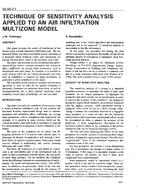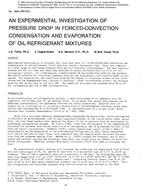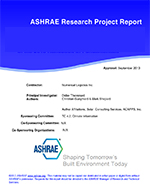Hot water at a temperature of about 120 deg F (49 deg C) circulated through a single row of aluminium (type 2024) spined pipe and transferred heat to room-temperature air in cross flow. Heat transfer was measured by performing an energy balance on the flowing water. Two sizes of spined pipe were studied, each at three different spacings. To ensure the water flow was always turbulent, a spring was inserted in the pipe. This turbulence inducer increased the inside heat transfer coefficient by 3.6 times compared to a bare interior. A power-law containing the Nusselt, Reynolds, and Prandtl numbers was used to correlate both the inside and outside heat transfer coefficients. The model of the air-side heat transfer includes spine efficiencies, which were generally above 70%. The agreement between the model and the data is within 3% in all cases. The model may be extended to the two-phase heat transfer commonly encountered in air conditioning and refrigeration by using an appropriate two-phase correlation for the inside heat transfer coefficient.
KEYWORDS: heat flow, pressure drop, cross flow heat exchangers, pipes, aluminium, room temperature, temperature, measuring, water flow, turbulent flow, turbulence promoters, heat transfer coefficient, Nusselt number, efficiency, Reynolds numbers, Prandtl number, air conditioning, refrigeration, extended surfaces heat exchangers, heat exchangers.
Citation: ASHRAE Transactions, vol. 96, pt. 2, St. Louis 1990
Product Details
- Published:
- 1990
- Number of Pages:
- 6
- File Size:
- 1 file , 640 KB
- Product Code(s):
- D-18641


